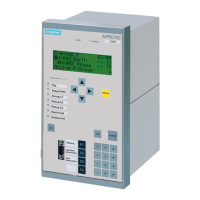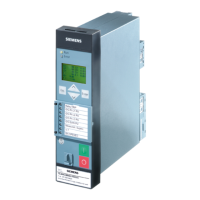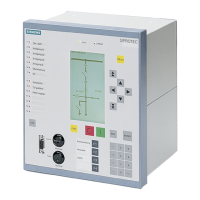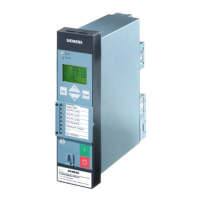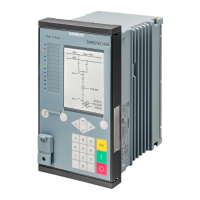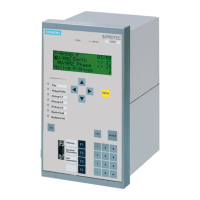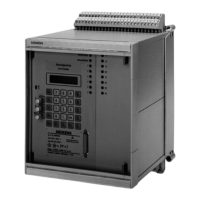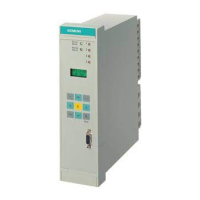exceeded at this time, there is no reaction. If the threshold value is exceeded again after expiry of the trip-
command delay time, while the dropout delay time is still running, tripping occurs immediately.
Setting Notes
General settings
During configuration of the protection functions (Section 2.1.1 Functional Scope), under address 131Sens.
Gnd Fault it was specified which parameters the ground fault detection uses.
When selecting Sens. Gnd Fault = Definite Time, the definite time parameters are available here.
When selecting Sens. Gnd Fault = Log. inverse A, one logarithmic inverse characteristic is available.
When selecting Sens. Gnd Fault = Log. Inverse B, one logarithmic inverse characteristic with knee-
point is active.
When selecting Sens. Gnd Fault = User Defined PU, a user-defined characteristic can be used for the
overcurrent elements 50Ns-1 or 51Ns.
When selectingSens. Gnd Fault = TOC IEC oder Sens. Gnd Fault = TOC ANSI, you can use an
inverse time characteristic for the 51Ns element according to IEC or ANSI standard.
The superimposed high-current element 50Ns-2 is available in all these cases.
If this function is not required, it is set to Disabled.
The function can be turned ON or OFF at address 3101Sens. Gnd Fault. If ground fault protection is
switched ON, tripping (including indication) is possible.
A two-stage current/time characteristic may be set at addresses 3113 through 3120. These elements operate
with the ground current magnitude. They only make sense where the magnitude of the ground current can be
used to specify the ground fault. This may be the case on
grounded systems (solid or low-resistant) or on elec-
trical machines which are directly connected to the busbar of an ungrounded power system, when in case of a
network ground fault the machine supplies only a negligible ground fault current across the measurement
location, which must be situated between the machine terminals and the network, whereas in case of a
machine ground fault the total ground fault current produced by the total network is available.
50Ns–2 Element (Definite Time)
Similar to the time overcurrent protection function the high set element is named 50Ns-2 PICKUP (address
3113). It is delayed with 50Ns-2 DELAY (address 3114) and may be set to generate a message or to trip. The
latter is only possible if address 3101 Sens. Gnd Fault is set to ON.
50Ns–1 Element (Definite Time)
The definite tripping characteristic 50Ns-1 is set with addresses 3117 and 3118 (address 131 Sens. Gnd
Fault = Definite Time).
Pickup Stabilization (Definite Time)
Pickup of the definite time elements can be stabilized by means of a configurable dropout time. This dropout
time is set in 3121 50Ns T DROP-OUT.
51Ns Element (Inverse Time)
The inverse tripping characteristic 51N-TOC is set with addresses 3119 and 3120 (address 131 Sens. Gnd
Fault = User Defined PU).
IEC/ANSI characteristics
For an inverse time element 51Ns, a characteristic according to IEC or ANSI standards may be used. These
characteristics can be employed for the measurement method cos φ / sin φ.
The type of IEC characteristic can be selected under address 3144 51Ns IEC CURVE. Setting options that can
ve selected are Normal Inverse, Very Inverse, Extremely Inv. and Long Inverse.
2.9.3
Functions
2.9 Ground Fault Protection 64, 67N(s), 50N(s), 51N(s)
SIPROTEC 4, 7SJ61, Manual 135
C53000-G1140-C210-6, Edition 05.2016
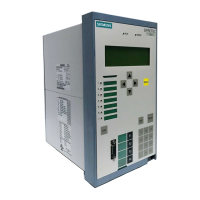
